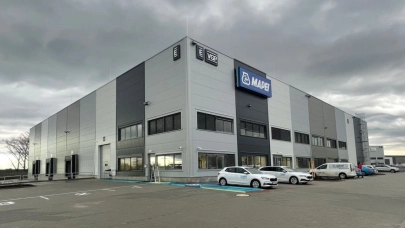
The CEE commercial real estate market experienced a significant rebound in H1 2025, with total investment volumes across the five key CEE markets reaching nearly €5 billion.
This figure represents almost 60% of the full-year total for 2024, signalling a robust return of investor confidence.
The Czech Republic led the investment activity with €2.1 billion, surpassing Poland, which recorded €1.7 billion, for the first time. Together, these two countries accounted for 77% of all regional investment.
The logistics sector continued its strong performance, attracting 32% of total investment volumes, particularly in the Czech Republic, Poland, and Slovakia. The sector’s appeal is driven by strong fundamentals, stable income, low risk, and structural trends such as e-commerce growth and nearshoring. Offices followed with 23% of the total volume, while retail accounted for 16%.
Major transactions in the period included Blackstone’s €470 million acquisition of the Contera portfolio and PPF Real Estate’s purchase of the Hilton Prague and Four Seasons Hotel Prague. A record-breaking sale-and-leaseback of Eko-Okna’s manufacturing facilities in Poland was also a highlight, valued at €253 million.
The report also highlights the growing role of domestic investors across the region. In the Czech Republic and Hungary, they accounted for 78% and 80% of total volume, respectively, while in Romania, domestic capital represented 35% of investments.
In Poland, domestic capital now accounts for 15% of total transaction volume, a significant increase from its marginal role just five years ago.
Dorota Lachowska, Head of Research at Knight Frank Poland, said: “In Poland, a return of major institutional investors is being observed, thus far predominantly within the warehouse sector. Equally noteworthy is the robust expansion of domestic capital activity - a trend that, as recently as five years ago, remained marginal within commercial real estate, yet today accounts for 15% of total transaction volume, and we anticipate that its share will continue to increase.”
Romania’s market was particularly dynamic, with a balanced sectoral performance. The retail sector led with 42% of the market, driven by activity in retail parks, while the office sector saw a "remarkable comeback," accounting for nearly one-third of total investments.
Ileana Stanciu-Necea, Head of Research at Knight Frank Romania, said: “Romania continues to offer the most competitive yields in the region, reinforcing its position as an attractive destination for international capital. This balanced sectoral performance highlights Romania’s resilience and its capacity to deliver sustainable growth opportunities across asset classes.”
The positive outlook for H2 2025 remains in place, supported by a robust transaction pipeline, stable prime yields, and declining interest rates across the CEE region.



